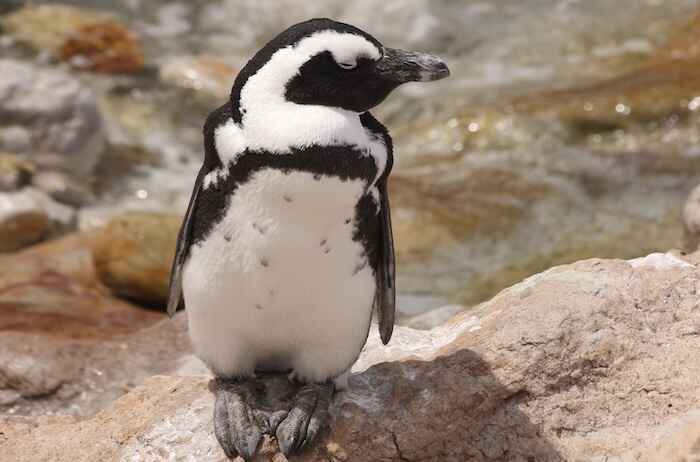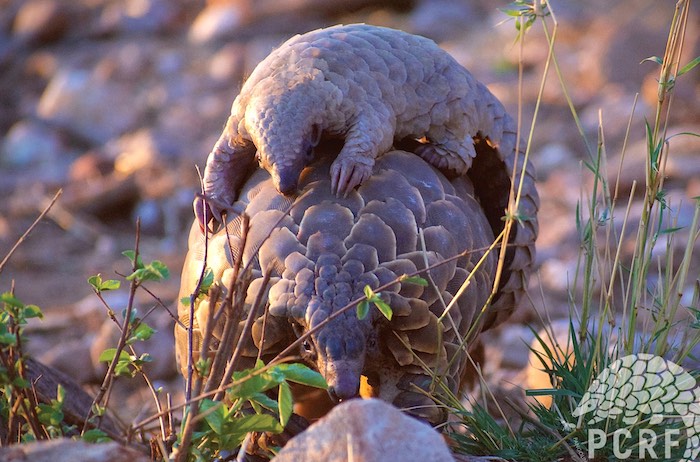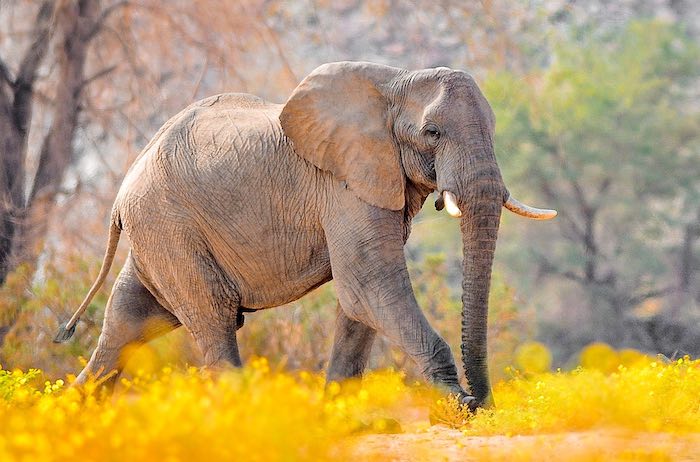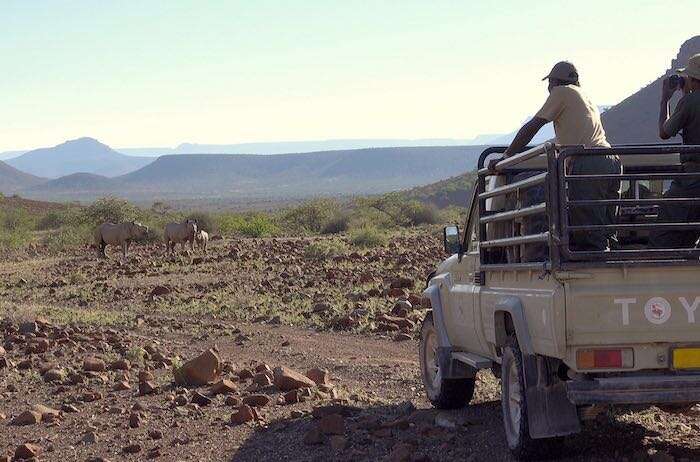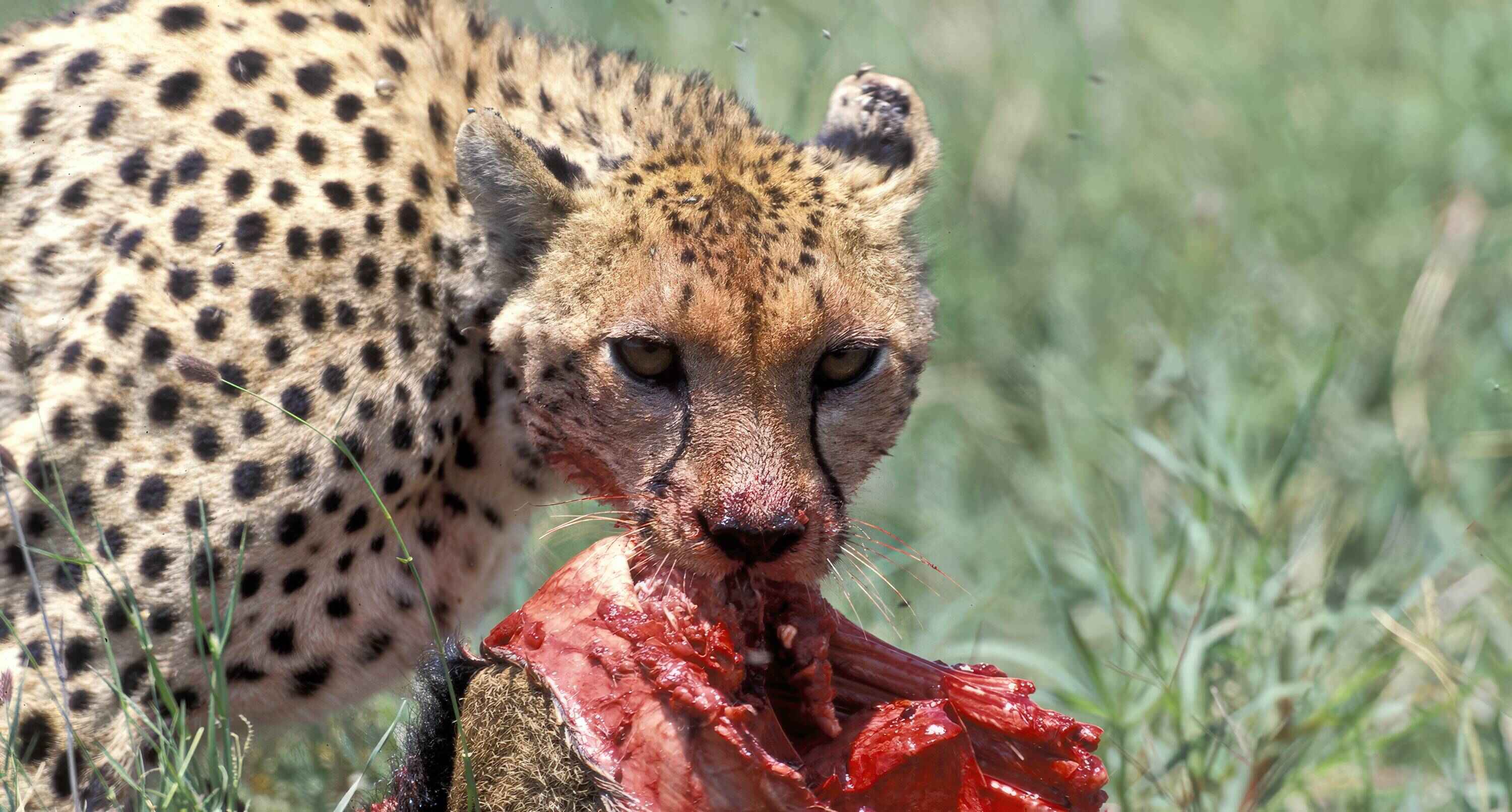
New studies reveal: cheetahs and leopards are harmed by consuming lead contained in bullets
13th November 2025
13th November 2025
Two scientific papers published in 2025 confirm the danger of lead bullets for carnivores. One paper published by Dr. Catherine Hauw and colleagues described the death of a cheetah after ingesting a lead bullet, while the other presented the results of an MSc study that showed elevated levels of lead in captive cheetahs and wild leopards in Namibia.
The toxicity of lead is well known and documented for animals and humans, but the specific role that lead bullets play in poisoning mammals is less well explored. Until now, most studies have focused on the impact of lead ammunition on scavenging birds, such as California condors, Old World vultures, and eagles. We now have evidence that African predators that eat meat containing lead bullets and fragments are susceptible to lead poisoning.
Cases of lead bullets causing cheetah deaths

The first indication that lead bullets were a problem for cheetahs came through a 2015 report of two cheetah deaths in South Africa published by Michelle North and colleagues. When a cheetah that was destined for release in Namibia displayed the same symptoms as the South African cheetahs before its sudden death, the veterinary team at the Cheetah Conservation Fund (CCF) immediately considered lead poisoning as a cause of death.
In all three cases, the cheetahs were fed with antelope or birds that had been hunted using lead ammunition just prior to the cheetahs’ deaths. They all displayed strange behaviour, including excitability or nervousness, abnormal back arching, seizures, salivation, and finally, death. Lead bullets or bullet fragments were found in the cheetahs’ stomachs after death, along with high levels of lead in their kidneys and livers. While other causes of death could not be ruled out entirely, lead poisoning from the bullets they consumed was the most likely cause of the observed symptoms and death.
Acute poisoning events like these are luckily rare in captive cheetahs. We do not know whether or how often this may happen in the wild, as the wild predators would have to be tracked for days after feeding on carcasses containing lead to witness any symptoms.
Lead poisoning can also be responsible for chronic health problems that are less dramatic than these sudden deaths. Chronic health problems can occur if, rather than consuming entire bullets or large fragments as in the published acute cases, carnivores consume tiny lead fragments regularly that build up over time. Scavengers are particularly at risk of being exposed to fragments of lead bullets.
Is lead accumulating in the bones of Namibian carnivores?
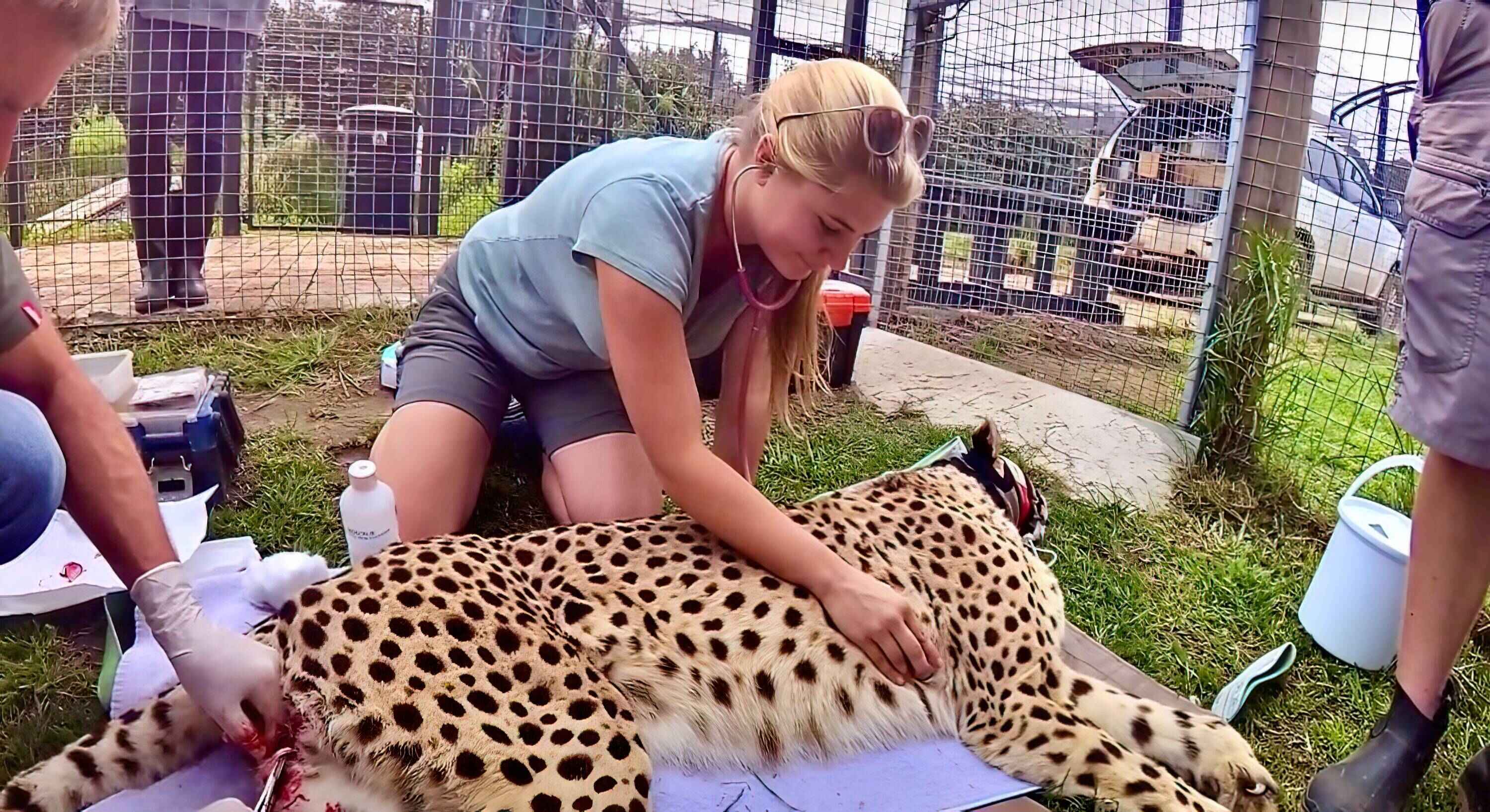
The previously mentioned studies sought to discover if there was a chronic lead poisoning problem in two Namibian carnivore species. Lead levels were compared among three groups: captive cheetahs fed meat from animals shot with lead, wild cheetahs that exclusively hunt their own prey, and wild leopards that both hunt and scavenge. Since hunters often discard carcasses contaminated with lead fragments, which could be eaten by wild leopards, one would expect wild leopards to show higher lead levels than wild cheetahs.
Lead is a toxic heavy metal that does not serve the body of animals but instead accumulates in bones and organs over time. Lead levels can therefore be monitored in the blood, hair, and bones of animals. Blood provides an indication of lead exposure in the last few weeks, while hair and organs, such as the liver and kidneys, reflect exposure over several months. Bones indicate that lead accumulation has occurred over the years. Carnivores that experienced chronic lead poisoning during their lives would contain high levels of lead in their bones.
CCF’s practice of keeping the bones of all the dead carnivores it has received since the early 1990s provided the perfect study material to answer our research questions. The CCF collection includes skeletons of cheetahs that were kept in captivity from a young age and never released, as well as cheetahs that were rehabilitated and subsequently released. Additionally, the collection features skeletons of wild cheetahs and leopards that were killed and the bodies sent to or collected by the CCF. The cheetah skeletons were categorised according to the time that the animals had spent in captivity. All leopards were wild.
We selected 62 cheetah and 11 leopard skeletons from this collection for the purpose of this study. We found lead in all bone samples, although the levels were lowest in wild cheetahs. On average, cheetahs that spent time in captivity had five times more lead in their bones than wild cheetahs; the lead levels increased with each year of captivity. Similarly, wild leopards had accumulated three times more lead in their bones than wild cheetahs.
We could understand the steadily increasing chronic levels of lead we saw in the captive cheetahs. While most meat fed to captive cheetahs is free of lead bullets and fragments, captive cheetahs at CCF used to be fed the heads of slaughtered donkeys and horses about once a month as behavioural enrichment to reduce boredom in captivity. Unfortunately, these heads were contaminated by the lead from the bullets used to shoot these donkeys and horses.
On impact, lead bullets break into numerous tiny fragments that can spread as far as 40 cm from the wound channel. These fragments were most likely consumed by the cheetahs. Since lead accumulates in bones, the longer the cheetahs spent in captive care, the more heads they had consumed, and the higher their lead levels. The practice of feeding heads was stopped in light of the study results.
The increased lead found in wild leopards also made sense, as leopards scavenge frequently and are therefore more likely to consume lead bullet remains from injured game or the entrails of game animals left behind by human hunters. In contrast, the low lead levels found in wild cheetahs can likely be attributed to the smaller source of lead through bioaccumulation from the general environment (e.g., soil) via their prey species.
Another noteworthy result was the high variability in lead levels observed in captive cheetahs that had been released, with some exhibiting the highest lead levels recorded in this study. All released animals went through a boma stage, where they are fed whole game carcasses that had been shot. This practice accustoms the cheetahs to eating whole carcasses as part of their ‘training’ for their new lives in the wild. It also increases the risk of ingesting lead bullets, which can lead to acute lead poisoning and death, or varying numbers of bullet fragments, as reflected by their bone lead levels.
Joining the call for unleaded bullets
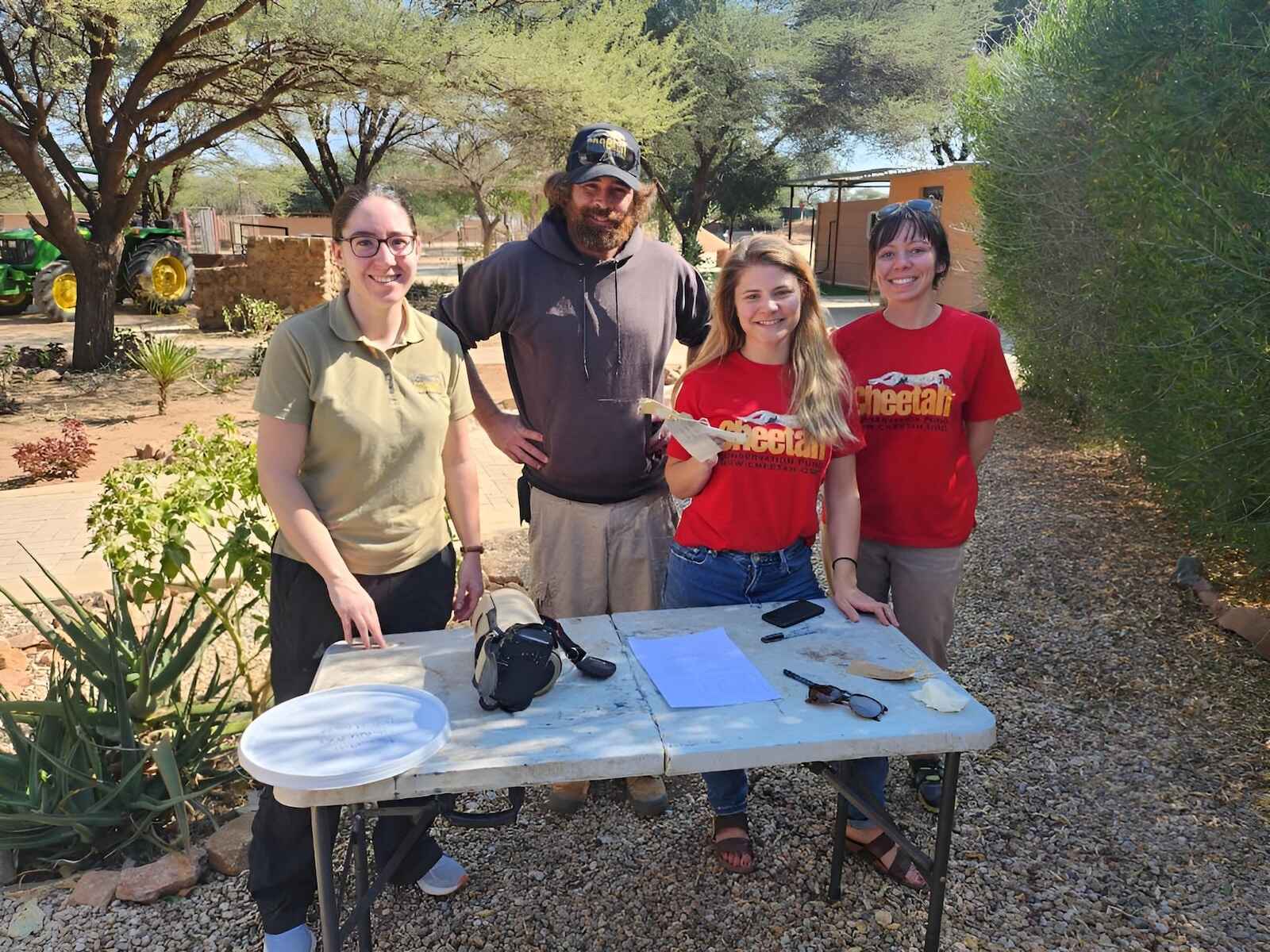

The lessons learned from our study have specific applications for carnivore sanctuaries and wider applications for the use of lead ammunition in general. A simple solution would be to refrain from using lead ammunition globally. Alternatives to lead bullets, such as steel or copper bullets, have been developed and are increasingly being used worldwide, with some countries having imposed a ban on lead bullets altogether (e.g., the UK in June 2025).
Non-leaded bullets are not always easy to find in Namibia, however, and it may take a while for hunters to adapt to using them. In the meantime, lead contamination can be avoided through careful meat preparation. Carnivore sanctuaries must take special care to avoid feeding lead-contaminated meat by: 1) not feeding heads if the carcass had been shot in the head, and 2) removing about 40cm of flesh around the bullet hole. Hunters who do not want their activities to harm non-target species should remove all traces of lead-contaminated carcasses from the field and not dump entrails in the open after slaughter. Switching to non-lead bullets is the best long-term solution.
Finally, although our study did not include the impact of lead consumption in humans, we know from extensive medical research that lead is just as toxic to us as it is to wild carnivores. While slaughterhouses may take measures to remove visible bullet fragments, it is likely that many unseen lead fragments will remain in game meat that is then prepared for human consumption.
Few people, including hunters and farmers, realise that lead bullets typically fragment into many hundreds of small, micro, and nano pieces which cannot be seen or felt. The combined surface area of these tiny pieces is thousands of times greater than that of the original bullet, making the lead easier to absorb into our bloodstream. When lead bullets are used to shoot game meat, it is essential to carefully remove the tissue surrounding the wound, as recommended for carnivores.
Like the cheetahs and leopards in this study, humans who eat game hunted with lead bullets are accumulating lead over time, which is known to cause chronic health problems. These include multiple organ damage, leading to cardiovascular problems such as hypertension in adults, reproductive problems such as impotence in men, and severe developmental problems such as low IQ in children. Future studies in Namibia need to test the amount of lead present in game meat, levels of lead in the blood of people who eat game meat regularly, and (if possible) lead accumulation in human bones after death.
Since no level of lead is considered safe for human or animal consumption, our findings lend significant weight to calls to ban the use of lead ammunition in the wildlife sector in Namibia and worldwide. Hunters, people who care about the environment, and anyone who consumes game meat can support this call by demanding alternative types of ammunition from bullet manufacturers and ammunition outlets. Prior to a complete ban, the government should consider implementing strong regulations against the use of lead bullets in the wildlife sector and increasing awareness of their toxicity. In the meantime, utmost care must be taken to prevent or reduce lead consumption by humans and wild carnivores by removing bullets and bullet fragments from animal carcasses.
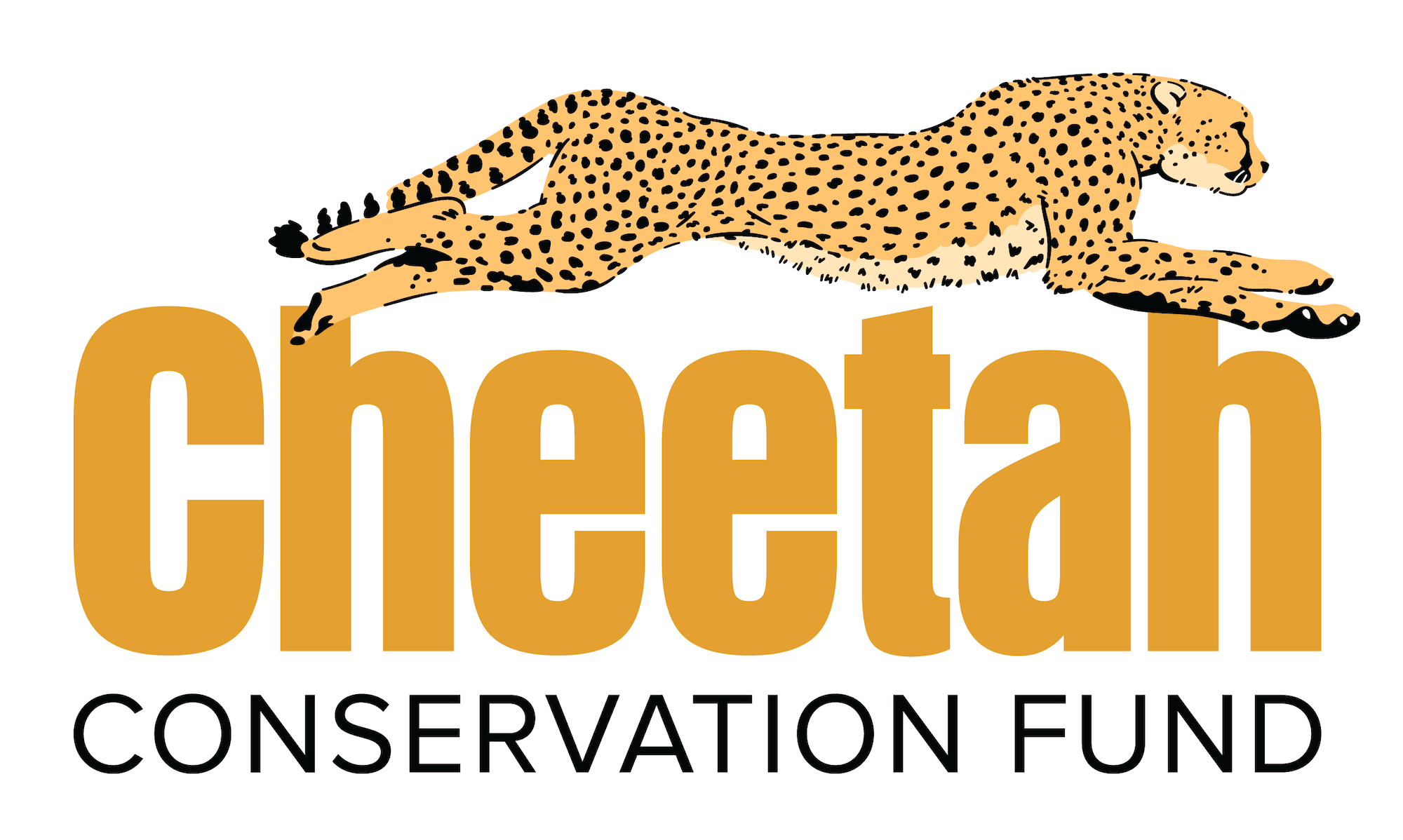
The research was conducted under the auspices of the Cheetah Conservation Fund and the Royal Veterinary College of the University of London, in collaboration with the University of Namibia, the Central Veterinary Laboratory, and Hokkaido University.
Read the scientific papers from Namibia here:
Hauw, C. et al. (2025). Case Report: Acute lead poisoning from bullet ingestion in a captive cheetah (Acinonyx jubatus) in Namibia: implications for wildlife management. Frontiers in Veterinary Science. View article.
Hauw, C. et al. (2025) Lead Bullet Burden: Widespread Lead Exposure in Wild Carnivores and Unseen Consequences of Feeding Lead-Shot Meat to Captive Cheetahs (Acinonyx jubatus). Journal of Wildlife Diseases. View article.
The Namibian Wildlife Lead (Pb) Poisoning Working Group
Established in 2021, this Working Group comprises individuals and organisations that work alongside the Ministry of Environment, Forestry and Tourism (MEFT) to address the issue of lead toxicity in Namibia’s environment and wildlife sector. The Working Group aims to identify options for how Namibia could address the issue, while exploring the potential for regional collaboration beyond Namibia’s borders.
The Working Group is collaborating with MEFT, hunters, and farmers to incentivise a transition towards lead-free ammunition in the wildlife sector. Their activities include monitoring and research on the levels of lead in vultures, carnivores, and people who consume game meat. To find out more about the working group and what you can do to become part of the movement towards a lead-free Namibian wildlife sector, visit https://n-c-e.org/namibian-wildlife-lead-pb-poisoning-working-group/.
Further research and call for samples
Building on the pioneering research and significant findings of her MSc project, Dr. Hauw is now pursuing a PhD at the Chemistry Laboratory of Wits University under Prof. Marc Humphries, in collaboration with Prof Jordan Hampton at Murdoch University, Australia. Her doctoral research focuses on using apex predators as sentinels of environmental lead exposure in South Africa and Namibia, within the framework of One Health. Species such as jackals, cheetahs, brown hyaenas, and leopards serve as indicators of lead contamination, helping to identify regional hotspots and ultimately contributing to the protection of vulnerable human communities through partnerships with the Ministries of Health and Environment of both countries.
For this new avenue of research, Dr. Hauw is seeking collaborations with anyone able to provide samples, whether from hunters, wildlife sanctuaries, parks, or government agencies. She is collecting bone, hair, and blood samples from terrestrial and marine carnivores to investigate lead exposure in wildlife, ecosystems, and humans. All collaborators are warmly welcome, including those already working on human lead exposure, to work on a One Health aspect of the research. Interested parties can get in touch at catherine.hauw@gmail.com
For more information, contact Cheetah Conservation Fund: +264 (0)67 306 225 or visit their website: www.cheetah.org
For articles on similar topics, please click one of the following options:
If you enjoyed this page, then you might also like:



For more great articles from Conservation Namibia see below...
Conservation Namibia brought to you by:
We use cookies to monitor site usage and to help improve it. See our Privacy Policy for details. By continuing to use the site, you acknowledge acceptance of our policy.
